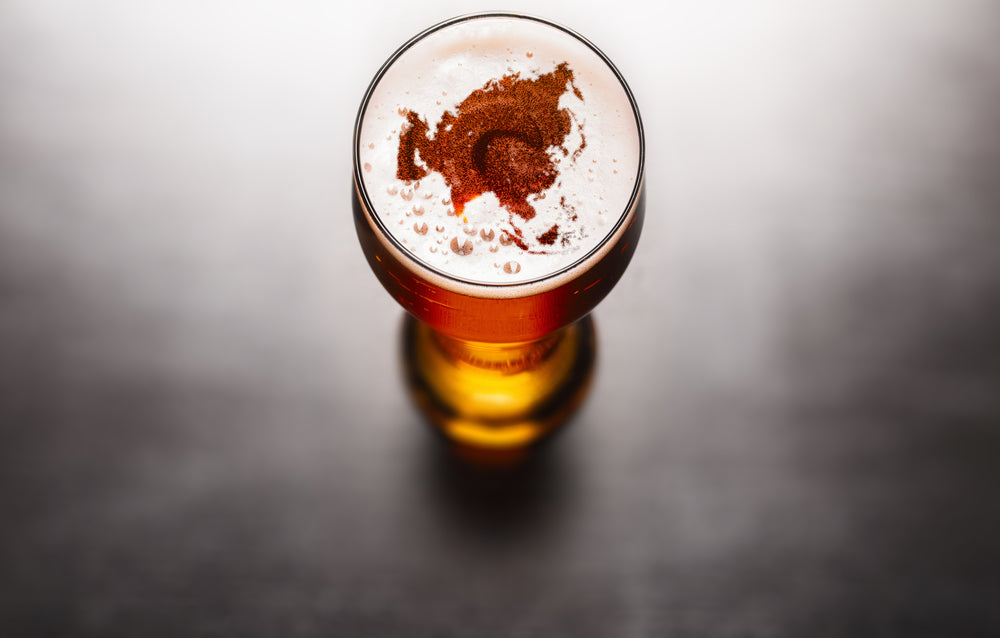Unquestionably, Great Britain has significantly impacted the world beer market, particularly craft beer. It is here that some of the most well-known beer varieties like pale ales, Scotch ales, stouts, and porters were invented. These ales have dominated the glasses and mugs of millions across the world. Although industrial lagers and ales that are low in carbonation dominate Britain, the different varieties of beer available in the nation are indeed astounding. Breweries, both large and artisanal, can be found throughout the country - from the southernmost parts of England to the northernmost reaches of Scotland. These breweries are constantly innovating and capturing the attention of beer enthusiasts worldwide.
History of British Beer
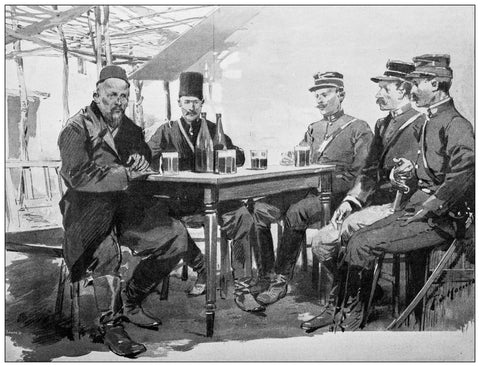
Brewing has a long history in Britain that goes back more than 2,000 years. In the Middle Ages, ale was a popular beverage, and the majority of people drank almost a litre of their homemade brew every day. Interestingly, the women dominated the brewing industry, and these women were known as alewives for the brews they produced and served in inns and taverns. The London-based Brewers Guild was established in 1342, marking the beginning of the brewing industry's formal attempts at organization. Almost two centuries later, Scotland created the Edinburgh Society of Brewers in 1598.
Back in the day, heather, myrtle, and broom were used as natural preservatives in British ale. In the 15th century, the Dutch introduced Hops (seed cones of the Hops flower which add bitterness to the beer. It is also used as a stability agent in the beer. It gives a citrus, fruity, and floral flavour to the beer) which allows people to distinguish between unhopped ale and hopped beer. New varieties of beer developed over the years to quench the thirst of workers and colonists in the British Empire. One of the earliest mass-produced beers, Porter, became extremely popular among London's working-class residents. India Pale Ale, known for its robust hopping to withstand the journey to South Asia, was the first beer that was traded internationally.
Let us explore some of the most popular beers in Britain:
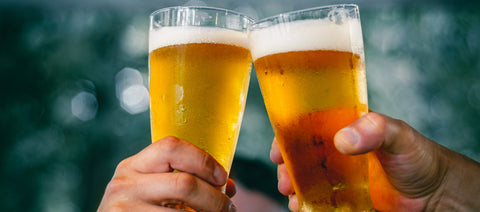
Pale Ale
The term Pale Ale was first used in the 18th century in England, but it was primarily used for beers made with pale barley malt and a little lighter than the usual dark and brown beers. The name was frequently used interchangeably with the term bitter, which further caused confusion. Even today, it can be difficult to tell these two styles apart (bitter and pale). They are usually golden or copper in colour.
Brown Ale
Brown Ale is an old beer that has been made for the past many centuries. During the 19th century, the term brown ale was used collectively for all beers that were made using brown malt. The brown ale style almost vanished after the invention of pale malt, and it wasn't until the 1920s that it was gradually reintroduced.
Newcastle Brown was the prototype to bear the name brown ale. Even though Newcastle Brown did not rely on the original versions of brown ales, it did lay the groundwork for the contemporary style.
Imperial Stout
Imperial Stout is a very robust and dark beer. Although it was initially created in London, it is now well-known for being enjoyed in the US, Russia, and the Baltic nations. These brews can be extremely dark, varying in colour from deep red to brown. They have flavours like roasted malt, dark and dried fruit, chocolate, and coffee. They have a rich, full flavour. They can be quite bitter from the hops and have a lot of alcohol content between 8 and 12%.
Sweet Stout
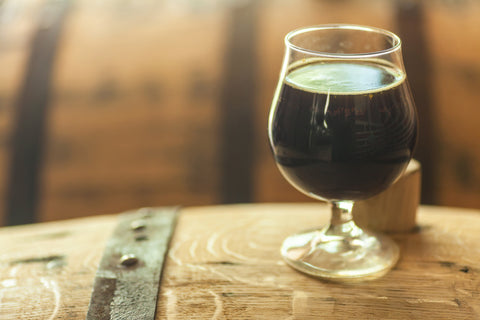
Sweet stout is also known as cream or milk stout. This type of beer contains milk sugar (lactose) and originated in England in the early 1900s. These stouts are dark, rich, and thick and have hints of grainy malt, coffee, and chocolate. They have a creamy texture, a moderate amount of hop bitterness, and malt sweetness to balance it. Sweet stouts pair well with desserts made of chocolate, creamy cheeses, spicy foods, game meats, and thick sauces.
Bitter
Bitter beer is quite common in the pubs of the UK. It comes in a variety of hues and flavours, but the majority of them have a malty flavour and a mild hop bitterness. They are not very strong or heavy. There are three varieties of bitter beers - ordinary bitter, best bitter, and strong bitter.
Porter
Porter was developed in London during the 18th century, but well-balanced and aromatic contemporary varieties do not have many similarities to the original Porter type. Porter is a versatile dark ale made from dark malted barley and a significant amount of hops. It has a roasted, malty flavour and medium hop bitterness taste. These days, brown, robust, and Baltic are used to describe the majority of porter-style ale. This style is thought to have first appeared in London alehouses where aged, fresh, and strong beers were all stored together before mixing them together to create different blends.
India Pale Ale
India Pale Ale is a distinct beer style with a contentious history. It is believed to have developed due to the need to transport pale ale to far-away British colonies, especially India, where the country's hot climate made conventional brewing difficult. Brewers are thought to have increased the alcohol content and added more hops, which served as natural preservatives, to make the beer suitable for long journeys. It is generally accepted that this beer style predated the 1830s when the term India Pale Ale was first mentioned.
Stout
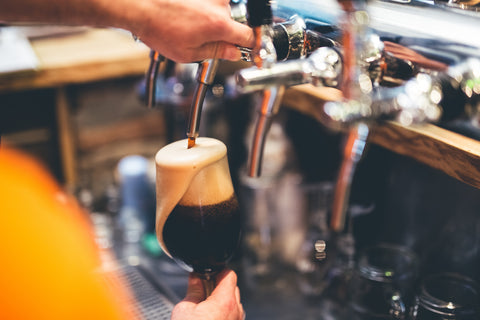
Stouts are top-fermented beers that are dark and have unique roasted flavour. Their origins can be traced back to the British porter, which emerged in London in the 18th century. Stout was actually the result of the brewers' desire to make a fuller and stronger porter. However, this difference is no longer seen today. A stout-style ale has the taste of coffee, cocoa, and chocolate. They have aromas of roasted malt and barley. Traditional dry stouts typically have a medium-light to medium-full body that is smooth, creamy, and silky. Their colour can range from black to deep brown. They typically have a long, dry finish and little hop flavour.


 Christmas 2025
Christmas 2025
 Frozen Food
Frozen Food
 Baking
Baking
 Beans, Peas, Soups & Tins
Beans, Peas, Soups & Tins
 Biscuits, Crackers & Cookies
Biscuits, Crackers & Cookies
 Candy / Sweets
Candy / Sweets
 Crisps & Snacks
Crisps & Snacks
 Chemist / Pharmacy
Chemist / Pharmacy
 Desserts
Desserts
 Gravy, Stock & Paste
Gravy, Stock & Paste
 Haggis
Haggis
 Indian Sauces, Paste and Pickle
Indian Sauces, Paste and Pickle
 Jams & Preserves
Jams & Preserves
 Poppy Appeal
Poppy Appeal
 Pot Noodles & Super Noodles
Pot Noodles & Super Noodles
 Scone Mix
Scone Mix
 Gluten-Free / Free From
Gluten-Free / Free From
 Tea Accessories
Tea Accessories
 Teapot & Tea sets
Teapot & Tea sets
 Tea For One
Tea For One
 Sugar & Creamer
Sugar & Creamer
 Tableware
Tableware
 Serveware
Serveware
 Plates & Trays
Plates & Trays
 Bowls
Bowls
 Cups & Saucers
Cups & Saucers
 Mugs
Mugs
 Silverware
Silverware
 Dinnerware - Accessories
Dinnerware - Accessories
 Dinnerware - For Pets
Dinnerware - For Pets
 Victoria Eggs - Hand-Drawn UK Homeware
Victoria Eggs - Hand-Drawn UK Homeware
 Jewelry & Accessories
Jewelry & Accessories
 Sale
Sale
 Christmas Gifts
Christmas Gifts
